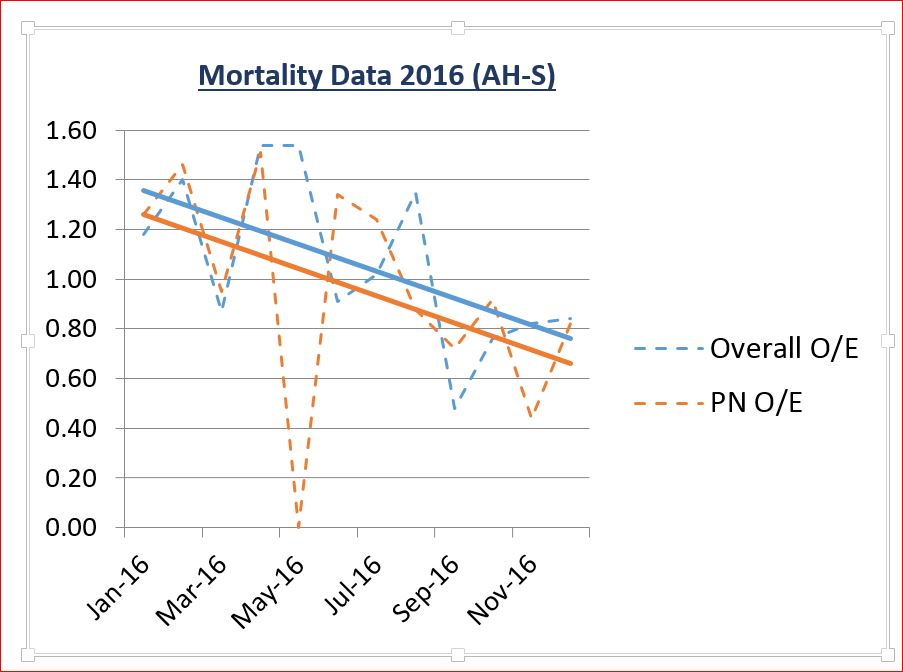Background: Mortality is the first quality metric reported by CMS, and historically a key measure for evidence based medicine since the 1800’s. THINK: John Snow removing the handle from the Broad street well pump to reduce cholera deaths
Ignaz Semmelweis demonstrating washing hands reduced puerperal fever and death.
Mortality rates are risk adjusted measures and reported as a ratio of Observed deaths/Expected deaths (O/E Ratio; O/E); the goal is to be below 1.0. Hospitals now focus on Inpatient and 30-day post-discharge mortality as publicly reported on CMS HospitalCompare.
Hospitalists can help improve mortality by:
Ensuring Evidence Based Medicine, treatments that reduce mortality
Coordinate care with nursing to reduce Patient Safety Events such as falls, CAUTI and CLABSI
Optimize risk stratification by appropriate documentation to accurately describe the patients’ clinical condition.
Purpose: Demonstrate how a hospitalist and nurse director can lead mortality reviews within 2 days of patient death, identify areas to improve clinical care and patient safety, and thus improve mortality rates.
Description: The hospitalist team identifies a Mortality Champion to be a member of the peer review committee, or the committee responsible for mortality reviews and mortality rates. The Mortality Champion along with a Nurse Director develop and coordinate Day After Mortality (DAM) Rounds to review all in-hospital deaths. This mortality review team includes the Mortality Champion, Nurse or Quality Director, clinical documentation R.N./Coder, and potentially physicians and nurses involved with the care of the patient.
DAM Rounds team review chart in JUST Culture Process looking for:
a. Missed Best Practices (e.g. delayed antibiotics in pneumonia)
b. Patient Safety Events (e.g. patient fall, CLABSI, preventable venous thrombosis)
c. Missed clinical documentation (e.g. organ system failures Present on Admission)
The Mortality Champion and Nurse Director report back to Peer Review committee on DAM Rounds, identify opportunities to improve care based on findings, and report mortality rates in transparent fashion.
Pilot: DAM Rounds were initiated at a 150 bed community hospital in 2016. Results demonstrated a significant reduction in Mortality Rates. (See Graph)
Conclusions: Day After Mortality Rounds led by a hospitalist Mortality Champion and Nurse Director are effective to improve in-hospital mortality rates by identifying opportunities to improve clinical care, patient safety and appropriate documentation. These rounds are performed as a function of Peer Review using a Just Culture process, and mortality rates are reported to hospitalists as well as medical staff in a transparent fashion.

